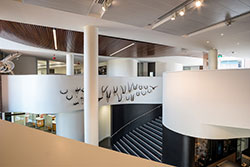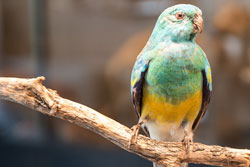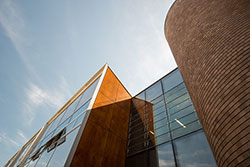Natural History Museum

Humans are natural collectors. Throughout time we have collected things to try to make sense of the world around us. Animals that intrigue us, items we don’t understand, objects that we perceive to be beautiful, quirky, dangerous, and different. The UNE Natural History Museum is a library of life; a place of activity, interaction and discovery. It serves as a reminder that there is no surrogate for real things. The most sophisticated computer graphics cannot replace the sense of wonder that comes with viewing the still remains of real animals, in all their extraordinary variety.
Opened in March 2017, the UNE Natural History Museum is a redevelopment of the original Zoology Museum established in 1969. Located in the recently built Agricultural Education Building, the move into this modern teaching facility afforded UNE the chance to showcase material from our botanical, geological and palaeontological collections along-side our comprehensive collection of zoological specimens.
Collections
The UNE Natural History Museum displays specimens from the world around us – and around the globe. This material has been acquired over decades, primarily driven by scientific research within the University, but also through donations and particular interests of individual staff members. As in most museums the specimens on display represent a tiny portion of the vast holdings. The remainder, cared for in storage, are preserved and conserved as a significant University resource for teaching, research, future testing and reference material for comparative purposes.

Specimens and the crucial documentation that resides along-side them; telling us where, when, how and who collected them, become a reference for identification, comparison and education. Museums in the 21st century are places of activity, interaction and discovery. Our installations help visitors to see patterns in nature, evolution and encourage evidence and object based learning.
The Natural History Museum is a distinctly modern exhibition space, dominated by one of Australia’s newest dinosaurs, known as ‘Lightning Claw’. This one of a kind sculpture is a reconstruction of a new megaraptor species discovered in opal rubble at Lightning Ridge by UNE researcher Dr Phil Bell and colleagues.
Visit us
Entry is free.
Normal opening hours are 9:30am - 4.30pm weekdays.
The Museum is closed on weekends, public holidays and from 24 December – 1 January (inclusive) each year.
Group bookings
Self-guided visits: groups of 10 people or less are welcome to visit our Museum without notice for a self-guided visit. For groups of more than 10, please make a booking using the UNE timetabling system to ensure Museum availability; we use the Museum for undergraduate teaching during trimester as well as intensive schools.
Guided visits: we offer 30-minute guided visits to groups. Due to space limitations, numbers should be limited to 30. Please book directly via email. Our students and academics offer insight into the evolutionary history of our biological collections, and can talk specifically on their area of expertise.

Location and Parking
Located in the Agricultural Education Building W077 on UNE main campus in Armidale, the museum can be accessed from Trevenna Rd, adjacent Pharmacy, which is located in the McClymont Building.
You can drop visitors right at the door of the Museum and go and park the car. The closest visitor parking to the UNE Natural History Museum is the western carpark, about 200m on from the Museum turn off.
Contact us
P: +61 2 6773 1018
E: museum@une.edu.au
The museum has a dedicated website for further information.

